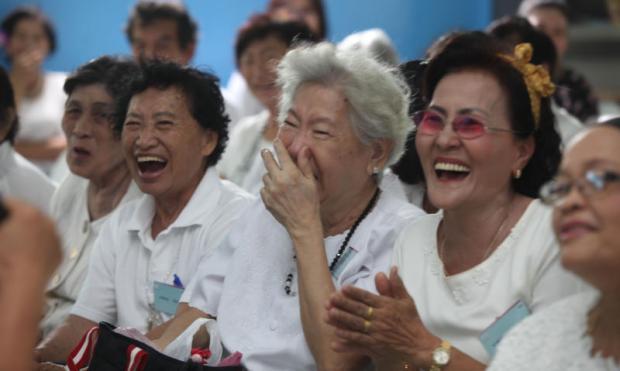Challenges, gains seen in ageing Asia
Asia will be home to 60% of world’s over-65s by 2030, creating growth opportunities for business, says Deloitte, the global consultancy.
The over-65 demographic in Asia will grow from 365 million in 2017 to more than 520 million in 2027, according to Deloitte’s Voice of Asia report released this week.
While this creates emerging challenges for ageing nations, ageing populations will also generate a growth cluster of new business opportunities, said the report, the third edition of its Voice of Asia series.
“Ageing populations may well be challenging to some nations, but they will also present some incredible business opportunities within those same nations. Our analysis shows that ageing will produce some very large winners at the industry level, particularly in Asia,” said Chris Richardson, Deloitte Australia economist.
Three big accelerators drive the industry opportunities in an ageing Asia, with each building on the other:
Asia is ageing fast, with a billion people in the region to be aged 65 and over by the middle of this century.
The money being spent by and on ageing populations will grow even faster, because the impact of new technologies and the ongoing management of increasing chronic conditions means healthcare costs will rise faster than most other costs.
Finally, private sector opportunities will grow even faster still, because stretched government budgets mean the share of health-related costs borne by taxpayers is likely to decrease in the decades ahead.
“Ageing populations in Southeast Asia is driving up the demand for healthcare. Everything from diagnosis, drugs to devices, will have to evolve together with the shift in demographics. There is an ever-pressing need for a robust healthcare system to cope with the changing needs of patients,” said Dr Loke Wai Chiong, Deloitte Southeast Asia healthcare sector leader and executive director at Deloitte Risk Advisory.
“Despite the challenges of a rapidly ageing population, digital and technology-enabled healthcare solutions can help mitigate care access challenges and enhance the patient experience. Healthcare systems in the region should continue to innovate to deliver higher value healthcare and to rein in rising healthcare costs,” Dr Loke said.
Deloitte Japan economist Tsuyoshi Oyama said: “As it is already increasingly evident in Japan, the surge in ageing-related opportunities will be evident well beyond healthcare. Rapid ageing in the Japanese population has changed the needs of people and the way businesses satisfy them. There has been increasing demand in sectors such as nursing, consumer goods for the elderly, age-appropriate housing and social infrastructure, as well as asset management and insurance.”
Some nations will be well positioned to take greater advantage of these demographic opportunities. In particular, India is set to rise as an economic superpower, driven in part by demographic changes. Following the rise of Japan and then China in decades past, India will drive the third great wave of Asia’s growth. Its potential workforce is set to rise from 885 million people today to 1.08 billion people in the next 20 years, and it will remain above a billion people for half a century.
Deloitte India economist Anis Chakravarty said: “India will account for more than half of the increase in Asia’s workforce in the coming decade, but this isn’t just a story of more workers: these new workers will be much better trained and educated than the existing Indian workforce, and there will be rising economic potential coming alongside that, thanks to an increased share of women in the workforce, as well as an increased ability and interest in working for longer. The consequences for businesses are huge.”
While the coming “Indian summer” will last decades and have the largest impact on the world, India isn’t the only Asian economy set to surge. Indonesia and the Philippines have relatively young populations, meaning they’ll experience similar growth.
Ageing is not a new issue, said the report. Japan is already dealing with a rapidly ageing population and its implications are not fully determined. Even India’s projected growth is not guaranteed. It needs the right institutional set-up to promote and sustain its growth, otherwise its rising population could cause increasing unemployment and consequent social unrest.
A number of areas can be addressed to fuel Asia’s economic future, said the report.
Retirement ages can rise: Fewer jobs are labour-intensive these days, while rising life expectancies are encouraging longer working lives, and today’s higher incomes are also encouraging people to work for longer. Fostering these trends can help the economic growth of those nations at the forefront of ageing impacts — as is especially true of Hong Kong, Taiwan, Singapore, Korea and China.
More women in the workforce: Asia has far fewer women than men in its paid workforce. Accessing that untapped “people power” is a direct lever, with which ageing nations can boost their growth potential.
Welcome migrants: 2017 is a year in which the politics of migration remains contentious, but the economics of migration remain excellent. Those nations at risk of a demographic-driven growth slowdown should open further to immigration. Accepting young, high-skilled migrants can help ward off ageing impacts on growth, but the critical issue is whether policy — and property prices — will allow this immigration to happen at sufficient scale.
Increase productivity: Productivity is just as much a contributor to economic outcomes as demographics. Governments can focus on education and training the workforce as a way to bolster the growth opportunities offered by new technologies.
An ageing Asia will rewrite the playbook of businesses there and around the globe, generating new opportunities by geography and by industry, not just in healthcare, but also more widely.
Source: http://www.bangkokpost.com/business/news/1328867/challenges-gains-seen-in-ageing-asia


 English
English




